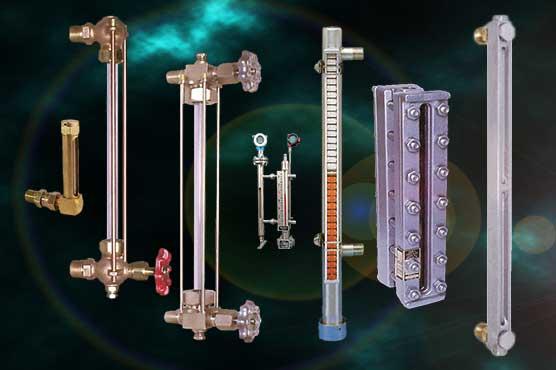-
Fil d’actualités
- EXPLORER
-
Pages
-
Groupes
-
Evènements
-
Reels
-
Blogs
-
Offres
-
Emplois
-
Forums
-
Film
Choosing the Right Liquid Level Gauge for Your Industry

Precision and safety are essential characteristics for every industrial operation that involves storing, processing, or transferring liquids. A liquid level gauge is one tool that can ensure precision and safety. These devices are very important for accurate measurement as well as mitigating operational risks such as leaks, overflows, and failures of the process.
It does not matter if you are in a refinery, chemical plant, or water treatment center, reliable liquid level gauges are simply required to monitor and manage fluid systems effectively.
What are Liquid Level Gauges?
Liquid level gauges are instruments that measure the level of liquid in a tank, vessel or system. They provide a visual or electronic representation of fluid volume in a tank which aids operators in ensuring processes are safe and efficient.
Even a small error in measurement can be costly with respect to time or danger when a measure is taken in an oil and gas, manufacturing or pharmaceutical operation. Liquid level gauges are dependable equipment because they allow for accurate real-time measurement and decrease operator error in taking manual measurements.
Types of Liquid Level Gauges
Different types of level gauges are needed depending on the application and industry. Below are the most common types found in Australian industries:
Reflex Level Gauges
These gauges use light refraction to differentiate between the liquid and gas levels. They are best suited for colorless or transparent liquids such as solvents and water.
Transparent Level Gauges
Transparent level gauges consist of glass plates on either side of the chamber offer applications where both the level of the liquids and the interface can be clearly seen.
Magnetic Level Gauges
Magnetic level gauges measure the liquid level by using a magnetic float and a magnetic indicator. They are suited for higher hazardous pressures or corrosive cells, such as in some oil and chemical stocks.
Tubular Level Gauges
Tubular level gauges consist of an easy to use and less expensive option to use in low pressure and non hazardous situations. Tubular level gauges are good international systems in smaller sized tanks or sometimes in utilities application.
Electronic Level Gauges
Electronic level gauges allow use of sensors and transmitters to contribute electronic level monitoring- digital or remotely. Electronic level gauges will best suit automated (or smart) process systems.
Working of Liquid Level Gauges
Although the precise method differs depending on design, every level indicator helps to find the place of a liquid inside of a container.
-
Mechanical gauges show the liquid level visually using sight glasses or floats.
-
Magnetic gauges use a float linked to an outside magnetic indicator.
-
Electronic gauges use sensors—for example, capacitive or ultrasonic probes—to record and show readings on digital panels.
Every approach guarantees operators can exactly monitor and manage fluid levels, hence sustaining ideal process effectiveness and safety norms.
Important Uses for Liquid Level Gauges
Nearly every industry sector has liquid level indicators, including:
-
Oil and Gas: Keep a check on lubricant, crude oil, and fuel levels.
-
Chemical Processing: Making certain that corrosive or hazardous fluids are correctly measured.
-
Water and Wastewater Treatment: Handling storage and distribution networks.
-
Power Generation: Keep the feedwater and coolant levels under control.
-
Measuring liquids securely in clean settings during food and beverage manufacturing.
Their flexibility makes them indispensable elements of large manufacturing processes as well as of tiny facilities.
Advantages of Liquid Level Gauge Use
The correct liquid level gauge can raise safety, efficiency, and performance. Main advantages are:
-
Correct monitoring helps to boost productivity and lowers waste by means of exact readings.
-
Enhanced security: Stops floods, leaks, and possibly fatal accidents.
-
Operational Efficiency reduces downtime and manual inspections.
-
Works for a range of liquids, pressures, and temperatures.
-
Designed for rigorous and demanding industrial circumstances.
Choosing the Correct Liquid Level Gauge: How?
Choosing the right gauge depends on a number of things:
-
Viscous, corrosive, or translucent fluids may need particular materials or designs.
-
Operating Conditions: Bear in mind environmental conditions, pressure, and temperature.
-
Higher precision applications might call for electronic or magnetic systems.
-
Tank Setup: Gauge design ought to fit the tank's dimensions, shape, and installation restrictions.
-
Maintenance and budget: Trade cost-effectiveness with long-term dependability.
A thorough evaluation guarantees the selected gauge offers correct, constant performance over years.
Maintenance Tips of Liquid Level Gauge
These basic maintenance procedures will assist you to extend the existence and maintain execution.
-
Clean and check glass or sight tubes to remove deposition.
-
Looks for cracks/flaws.
-
Be precise by periodically calibration of sensors.
-
Rapidly work with the components like floats or gaskets that are outdated.
-
Make sure wiring and signals of electronic gauges are working properly.
Regular maintenance guarantees consistent running and helps one to avoid unexpected equipment failures.
Conclusion
Modern sectors depending on accuracy and safety in liquid management absolutely need liquid level gauges. These devices offer the precision, dependability, and control required for effective industrial activities, from basic tubular models to complex electronic systems.
- AI
- Vitamins
- Health
- Admin/office jobs
- News
- Art
- Causes
- Crafts
- Dance
- Drinks
- Film
- Fitness
- Food
- Jeux
- Gardening
- Health
- Domicile
- Literature
- Music
- Networking
- Autre
- Party
- Religion
- Shopping
- Sports
- Theater
- Wellness


